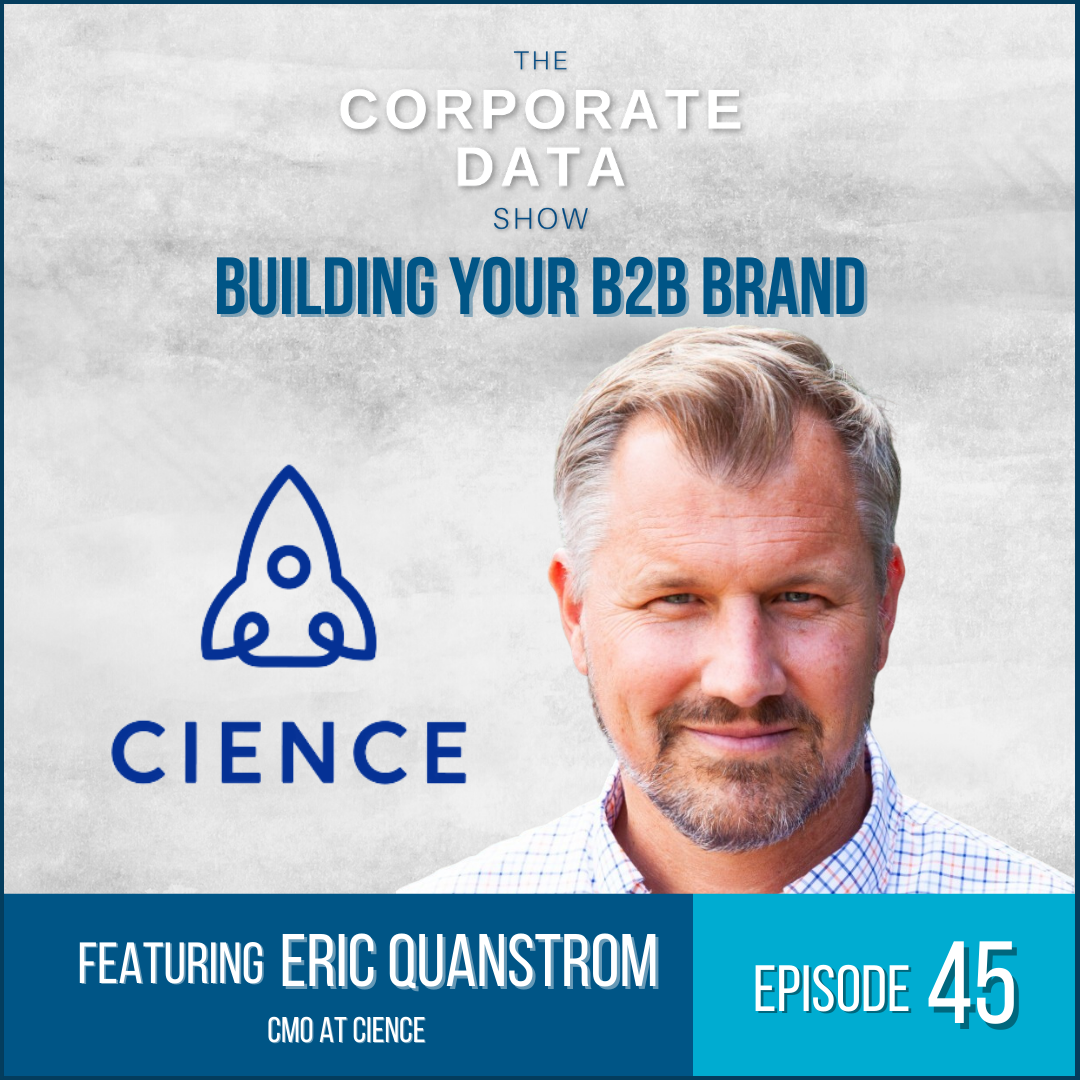
Which lead generation strategies actually work?
Lead generation is not all about getting random potential clients. It’s about getting them so close to a purchase decision that all you have to do is grab their attention and show them that your service is the solution to their problem.
This is why lead generation is important for any business and the backbone of a quality B2B marketing strategy. When you increase leads, you’re not only increasing brand awareness and interest in your service, but you’re also nurturing prospects through your sales pipeline. And with a strong pipeline, you can maintain a steady growth rate.
B2B lead generation strategies differ quite a bit from B2C strategies in regards to establishing this pipeline. On average, B2B cycles are much longer than B2C cycles because B2B buyers are typically more methodical about their purchases, taking into account more factors.
For this reason, B2B marketers like to use a combination of inbound and outbound marketing to establish a pipeline. With outbound marketing, you can grab the attention of your leads more immediately. While inbound marketing enables you to position your business in a way that allows your leads to easily find your product.
Let’s take a look at the 10 best lead generation strategies that work in 2021.
-png.png)
When it comes to lead generation, email is the clear winner. After all these years, the OG is still on top.
According to a recent report released by Cognism, 51.9% of salespeople 29.6% of marketers named it their number one lead generation channel last year—beating out cold calling, PPC, and SEO.
Especially with more and more people working remotely, email has been going into overdrive. According to Hubspot, 86% of B2B professionals choose email over other channels to communicate with colleagues, customers, and leads.
But to generate leads by email, you need a powerful top-of-the-funnel tool so you can precisely target leads with high accuracy. EMMquery allows you to build your own B2B marketing and outreach email lists, find new markets, and enrich your existing customer data.
B2B prospective customers often have high expectations, which is why it is important to really impress. Account-based marketing (ABM) is a popular marketing strategy because it targets specific prospects with content that is relevant to them. With customized content, customers don’t need to do any research to see how your product or service helps them. Considering 74% of customers think their vendors don’t communicate with them often enough, timely customized content could be a game-changer.
To optimize your marketing campaign with high-quality content to high-value targets, you’ll need high-quality and versatile data so that you can reach key decision-makers. Once you’ve targeted specific recipient groups, you can curate your content to match their needs. If you market to everyone, you have to include a lot of content to reach all types of businesses, which is far less convincing.
Content marketing is more than just blog posts. It’s articles, graphics, videos, and so on. Especially for companies that have interesting content to share, this is an amazing option. But for it to work, you’ll need to do some research to find out what your clients enjoy and what kind of language they are receptive to.
A Hubspot State of Marketing report recently revealed that 70% of marketers actively invest in content marketing, while 24% say they plan on increasing their investment in content marketing. One of the most popular forms of media used in content strategy is blog posts. In fact, the Content Marketing Institute found that in 2020, 89% of content marketers used blog posts in their strategy.
By providing your targeted group with high-quality copy, your website will have great search engine optimization (SEO). This will increase your page views organically because leads will discover your site through search engines. This goes a long way considering B2B buyers prefer to research and arm themselves with knowledge before making purchasing decisions.
To create strategies that work best for customers, marketers use tools like Ahrefs and Accuranker to perform backlink research, keyword research, competitor research, and keyword rank tracking. Using these tools can result in more B2B leads by increasing your organic traffic so your business can stay ahead of the game. But this only works if you stay consistent and keep at it.
LinkedIn is a great social media platform to reach potential customers and create leads for B2B marketers.
LinkedIn has come a long way since its launch in 2003. It was originally built as a professional networking platform, but since then, it has morphed into a powerful lead generation tool. For B2B marketers, the use of LinkedIn lead generation ads is now a major part of their strategy.
Growth hacker, Zuzu Witulska, from Netguru (software development company) says, “This gives our ads the chance to reach C-level decision-makers from companies of our interest, as well as potential leads.”
By targeting fintech companies with an eBook in one of their lead generation campaigns, Netguru was able to generate over 240 high-quality contacts. Not only do LinkedIn Ads generate high-intent leads, but they’re an affordable solution as well. Netguru noted that their lead acquisition cost using LinkedIn ads was 78% lower than other lead campaigns they ran.
LinkedIn has truly proven itself to be the king of lead generation for B2B marketers. In fact, 80% of all B2B leads are through LinkedIn, according to an Oktopost analysis. The closest after that is Twitter at 12.7%. So if you’re looking for a lead generation power tool, LinkedIn is a great place to start.
When they’re well-timed and controlled properly, Google Ads are a great way to generate leads. If done incorrectly, pay-per-click (PPC) can be costly. To decrease your cost-per-click (CPC), it’s important to use highly relevant keywords to efficiently convert viewers into qualified leads.
B2B marketers love PPC because it’s the most effective way to generate leads quickly and efficiently, especially compared to SEO and content marketing, which take time. And while there are various ways to post adverts online, Google Ads is the most frequently used platform. That’s because you can post ads across the entire network—and you can go three different routes:
It’s important to note that you’ll want to post ads in the location of your ideal customer, whether it’s physical or digital.
If managed well, B2B live chat can be a lead generation machine. Done incorrectly, you’re presenting people with just another annoying pop-up. But if you have a professional representative that knows what they’re talking about and is available the moment a prospect asks a question, they can move straight into the decision stage of the buying process.
If you’re not using a live chat app now, you might want to hop on the train soon because odds are, your competitors are using it. According to statistics from 99 Firms, 66% of B2B organizations are using live chat for customer support. If you don’t know where to get started, here’s TechRadar’s 2021 list of the best live chat software.
Never underestimate the power of referrals. Family, friends, and colleagues are more persuasive than you might think.
According to Nielson, 77% of people find family and friends to be the most persuasive form of advertising in their lives. Furthermore, 26.2% of the respondents in the Cognism survey said that the majority of their new customers were acquired via referrals last year.
So if you don’t have a referral system, you might want to get started. All you have to do is start asking for referrals. By interacting with referrals, you can also create better, longer-lasting relationships, which will eventually lead to results.
If you’re unsure where to get started, here’s a great guide on how to use referrals for B2B lead generation.
Holding virtual events is a new strategy for B2B marketers that was made popular due to the pandemic. Before the pandemic, B2B virtual events rarely happened. But now marketers are pulling out all the stops.
The switch to virtual events happened because marketers needed to do something with their events budget during the lockdowns. Some of them chose to use it all for digital channels, but others spent a portion of it on virtual events.
Of those who responded in the Cognism survey, over half (55.3%) of the companies that held virtual events said the results were good, if not, better than events held in-person.
Because of these positive outcomes, more B2B marketers are setting aside a place in their budget for these events. With people still working remotely, virtual events could be here to stay. Only time will tell.
The name says it all. Omni means “all,” which means omnichannel marketing utilizing all platforms that get in front of the buyers so that they can make an informed decision. This strategy focuses on drumming up exposure for your brand rather than putting all your marketing efforts into one channel.
This means interacting with customers by phone, video, apps, in-person visits, and so on. According to McKinsey & Company, 2 out of 3 consumers prefer digital self-service or remote human interactions. The choice of channel age has arrived, and B2B marketers have found much to like.
Furthermore, 80% of B2B leaders say omnichannel is actually more effective than traditional marketing methods. In the past year, omnichannel has become the norm in a year that has been anything but.
If a picture says a thousand words, how many words does a video say? There’s a reason videos have historically been successful lead generators—they catch people’s attention and they make your service or product easier to understand.
And with the millennial generation becoming older and taking over the roles of decision-makers, videos need to play a bigger part in your marketing campaign. According to CharityDynamics, 60% of millennials prefer to see videos than reading newsletters.
Creating videos is also easier to make than ever. With tools like InVideo, you can create videos by selecting templates, customizing them, and editing your video by adding text, branding elements, and transitions—all for one low subscription price.
By fine-tuning your process and testing new tactics, you can find the right lead generation strategy that works for your company. There isn’t a one size fits all strategy. What works great for one industry might be completely useless for another. But with some hard work and time, applying some of these strategies will hopefully convert more of your traffic.
Are you interested in finding out which lead generation strategies might work best for your business? Reach out to the Every Market Media team! We’d be more than happy to help out. And if you’d like additional B2B marketing tips and tricks, listen to our podcast, The Corporate Data Show, where we talk to CEOs from both large and fast-growing B2B firms throughout the world.

Which lead generation strategies actually work?

Happy Holidays and welcome back, folks! Last week on The Corporate Data Show, Eric Quanstrom, CMO of Cience, and I had a chat about Building Your B2B Brand. So for...